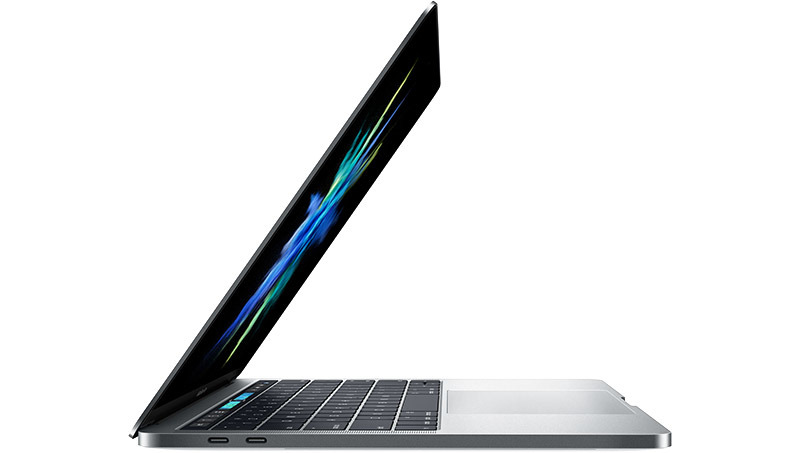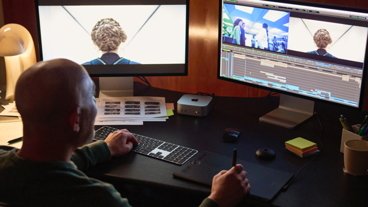In an email response to a customer question concerning the 16GB memory cap on Apple's new MacBook Pro lineup, a longstanding ceiling for the notebook series, SVP of Worldwide Marketing Phil Schiller said the design decision stems from a need to prolong battery life.
The memory controllers found in Apple's new MacBook Pro with Touch Bar models can only handle up to 16GB of fast 2,333MHz RAM, a definite negative for imaging and video professionals looking for a bulletproof setup.
As Schiller explained to a MacRumors reader who asked about the restriction, RAM allotments of more than 16GB would require more power-hungry controller unsuitable for use in a laptop. Like all cutting edge designs, the MacBook Pro with Touch Bar is an exercise in balancing performance and efficiency.
"To put more than 16GB of fast RAM into a notebook design at this time would require a memory system that consumes much more power and wouldn't be efficient enough for a notebook," Schiller said.
Apple touts its latest top-of-the-line MacBook Pros as having "all-day battery life." Specifically, the company says the notebooks can last up to 10 hours between charges, though that number will fluctuate depending on use case.
According to Apple's MacBook Pro webpage, battery life testing involved iTunes movie playback and common web browsing on standard configuration testbeds with 8GB of RAM, as well as models running the 16GB memory option. Considering the MacBook Pro is marketed toward professional users who run intensive software like Final Cut, Photoshop and similar apps, often simultaneously, the quoted 10 hour estimate is for many wishful thinking.
Considering battery life constraints, a good number of MacBook Pros will likely spend most of their time plugged into a wall outlet. That being said, Apple can't simply bring a laptop format device to market without ensuring the product can perform on the go.
To grab the lowest prices on Apple's new MacBook Pro with Touch Bar, see AppleInsider's Mac Price Guide.
 Mikey Campbell
Mikey Campbell








 Brian Patterson
Brian Patterson
 Charles Martin
Charles Martin


 Malcolm Owen
Malcolm Owen
 William Gallagher
William Gallagher
 Christine McKee
Christine McKee
 Marko Zivkovic
Marko Zivkovic








179 Comments
Not buying a new one until 32gb is an option. Ridiculous.
It's really because the laptop is too damn thin that they can't put a bigger battery in it to allow it to have more RAM. All for the sake of thiness.
What a terrible decision. We buy high end Macbook Pros in our company. We buy lots of them and we max it out with 1TB SSD and a discrete graphics card. Many of our users are video editors for 360 video and our developers need more RAM for their needs. I need more RAM for running virtual machines. This is clearly a case of Apple not listening to their customers. Most of the time our laptops are plugged in. We can live with a USB type C connector as long as there are enough of them. To Phil Schiller. Give us Apple customers the choice in the Pro series between 1. More RAM sacrificing battery life 2. Choice of AMD/ATI graphics vs nVidia. Sorry but a lot of 3rd party tools still only support CUDA and not yet OpenCL. Typically many small developers who tools we use will write for nVidia only. This throws a monkey wrench in our pipeline development This is frustrating. We've been stuck at 16GB for too many years. There is no excuse for the top end Macbook Pro (w discrete graphics card) to be limited to 32GB. At another former company (500 artists) many of our users using Foundry's Nuke or Mari would be using 128GB or 64GB systems from a 1U system with a PCoIP graphics card. Computers were in Los Angeles and the artists were in Vancouver (BC govt subsidies lured the companies there). Apple time to listen to your customers. One shoe , or one max RAM size does not fit all. Sorry. Don't care what the limits are for the Macbook Air or Macbook (which by the way we never buy, has only one port and that too it has to be used for power, why couldn't he Macbook have two USB-C ports?)
And who's fault is that?
2015 15-inch MacBook Pro: 99.5 WHr battery
2016 15-inch MacBook Pro: 76 WHr battery
2015 13-inch MacBook Pro: 74.9 WHr battery
2016 13-inch MacBook Pro: 54.5 WHr battery
2016 13-inch MacBook Pro with Touch Bar:
The quest for thinness in a "Pro" machine is bringing out the causalities.
Actually, the company at fault here isn't Apple, but Intel. Skylake doesn't support the needed LPDDR4 that would allow them to go to higher capacities. And Kaby Lake will only have support in the U chips, and U chips aren't mobile quad cores, so the 15" won't be able to get the upgrade even when they do go to KBL.
In short, Intel continues to drop the ball. It's hard to imagine Apple isn't getting tired of this kind of crap.